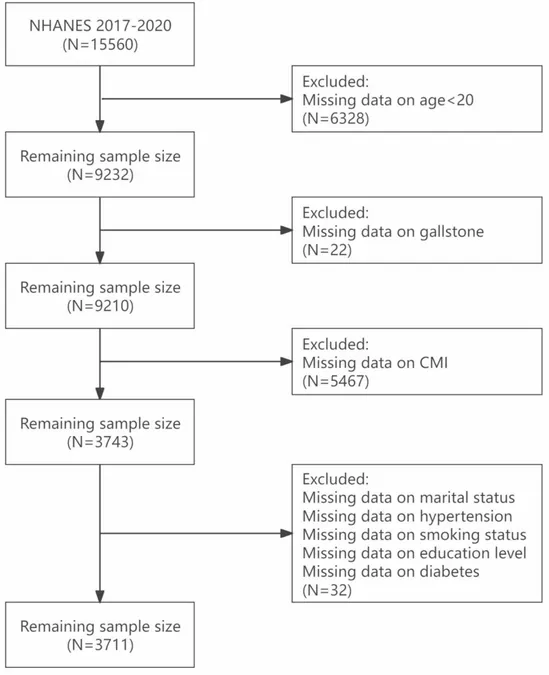
Startling Link Between Cardiometabolic Index and Gallstones: New Findings Show Women's Risk Skyrockets!
2025-06-07
Author: Yu
Uncovering the Gallstone Mystery
Gallstones are a prevalent issue affecting millions, but one pressing question remains: how do our metabolic health metrics, specifically the cardiometabolic index (CMI), influence the onset of this condition? A groundbreaking study investigates this very link, shedding light on the complex relationship between CMI levels and gallstone prevalence in the U.S. adult population.
Study Breakdown: The NHANES Findings
In a comprehensive analysis of 3,711 participants from the National Health and Nutrition Examination Survey (NHANES) conducted between 2017 and 2020, researchers employed sophisticated statistical methods to dissect the relationship between CMI and gallstones. Astonishingly, they discovered that the weighted prevalence of gallstones stood at approximately 11.04%. More critically, a clear trend emerged: as CMI levels increased, so too did the likelihood of developing gallstones.
Key Insights: Women and Younger Adults at High Risk
The data notably revealed that women and individuals aged 20 to 50 were more significantly impacted. The analysis showed that for every unit increase in CMI, the risk of gallstones jumped by 5%! This compelling finding emphasizes the urgent need for awareness and preventive measures, particularly among young women.
Why Is This Happening? The Role of Metabolism and Lifestyle
Gallstones are often formed when our bile becomes too saturated with cholesterol, a problem exacerbated by poor metabolic health. High CMI is indicative of visceral fat accumulation, abnormal cholesterol levels, and insulin resistance, all known risk factors contributing to gallstone formation. Furthermore, lifestyle factors associated with elevated CMI, like higher fat and salt diets and obesity, play a pivotal role.
CMI: A New Way to Understand Health Risks
CMI blends measurements of waist-to-height ratio and lipid profiles, making it a superior indicator of metabolic health compared to traditional metrics like BMI. This study suggests that CMI might serve as a more reliable warning system for gallstone risk, aligning with previous research showcasing its significance in predicting various health issues.
A Call to Action: Future Research and Awareness Needed
While this study provides illuminating insights about CMI's relationship with gallstones, the authors stress the necessity for further investigations. Longitudinal studies will be vital to establish cumulative effects and causality. Individuals, especially women under 50, are encouraged to monitor their metabolic health and adapt their diets to mitigate gallstone risks.
Conclusion: The Road Ahead
This urgent new research amplifies the need for public health initiatives targeting metabolic health, particularly in recognizing gallstone risk factors. As we navigate an era plagued by unhealthy lifestyles, understanding and addressing the nexus between CMI and gallstones could empower preventive measures, ultimately changing lives for the better.




 Brasil (PT)
Brasil (PT)
 Canada (EN)
Canada (EN)
 Chile (ES)
Chile (ES)
 Česko (CS)
Česko (CS)
 대한민국 (KO)
대한민국 (KO)
 España (ES)
España (ES)
 France (FR)
France (FR)
 Hong Kong (EN)
Hong Kong (EN)
 Italia (IT)
Italia (IT)
 日本 (JA)
日本 (JA)
 Magyarország (HU)
Magyarország (HU)
 Norge (NO)
Norge (NO)
 Polska (PL)
Polska (PL)
 Schweiz (DE)
Schweiz (DE)
 Singapore (EN)
Singapore (EN)
 Sverige (SV)
Sverige (SV)
 Suomi (FI)
Suomi (FI)
 Türkiye (TR)
Türkiye (TR)
 الإمارات العربية المتحدة (AR)
الإمارات العربية المتحدة (AR)